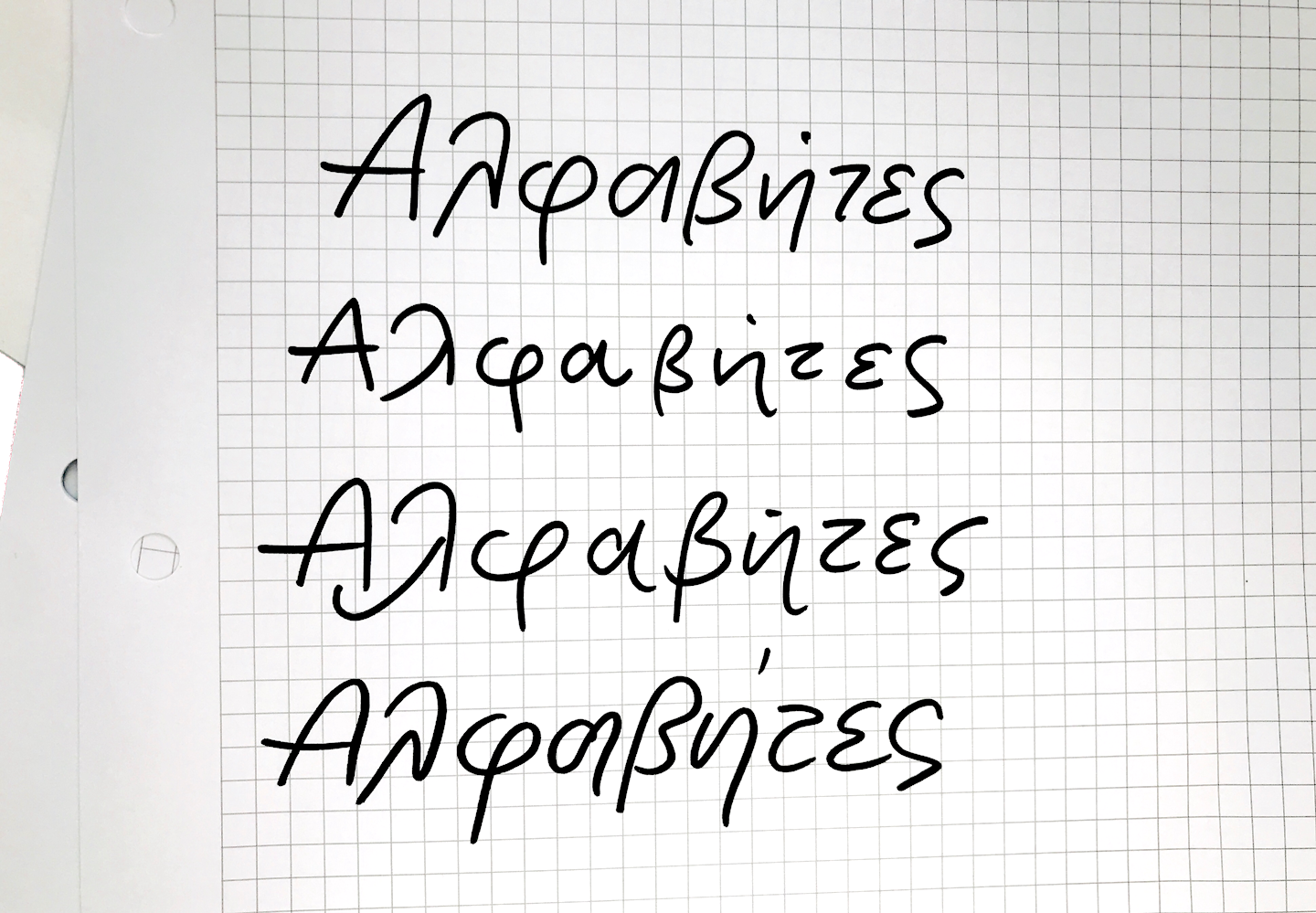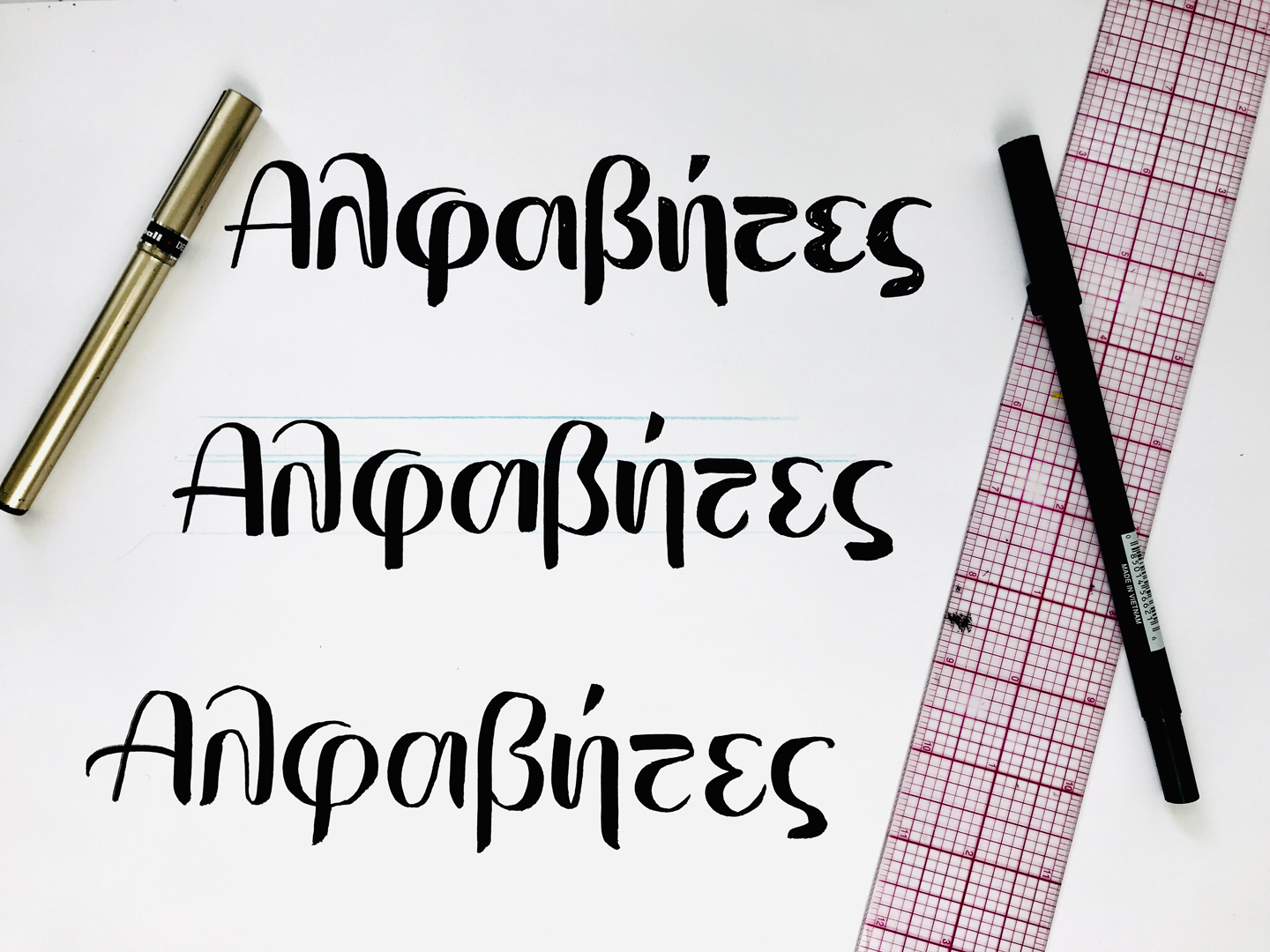This week’s header started with a conundrum: to transliterate, or not to transliterate? In this case there were two main reasons not to. First of all, the word Alphabet is Greek, literally a portmanteau of άλφα and βήτα (alpha and beta) – like saying the ABCs. Given this, it felt wrong to use Greek letters but spell it according to how it sounds in English. Secondly, the Greek writing system does not have a letter to represent the Latin b sound. In fact, the word βήτα (beta) is actually pronounced VEE-ta in Greek. The b sound is not native to the Greek language and is most commonly found in words of foreign origin. In those cases the sound is created by putting two letters together – μ (m) and π (p). Alphabettes transliterated would therefore become Άλφαμπετς. Instead, and read aloud with me – our Greek header is pronounced Alpha-VEE-tess.
When I finally decided how to spell the word (half the battle!), I was ready to work on the design. This was my first attempt at digitizing Greek letters. Though I have an advantage as a native speaker, there was a challenge once I had to make basic decisions about proportions and spacing. The letters were digitized in Robofont but I first worked on paper, and the resulting design is based on brush pen strokes.
Since most typefaces out there that support Greek are large “workhorse” families, it is rare to see modern experimental Greek typefaces or lettering. A project like this gave me the freedom to try something that may never be used and experiment beyond function. Some of the movement in the forms mimics the way I would write these letters, but it is mostly just a weird design – and I enjoyed the exploration!



